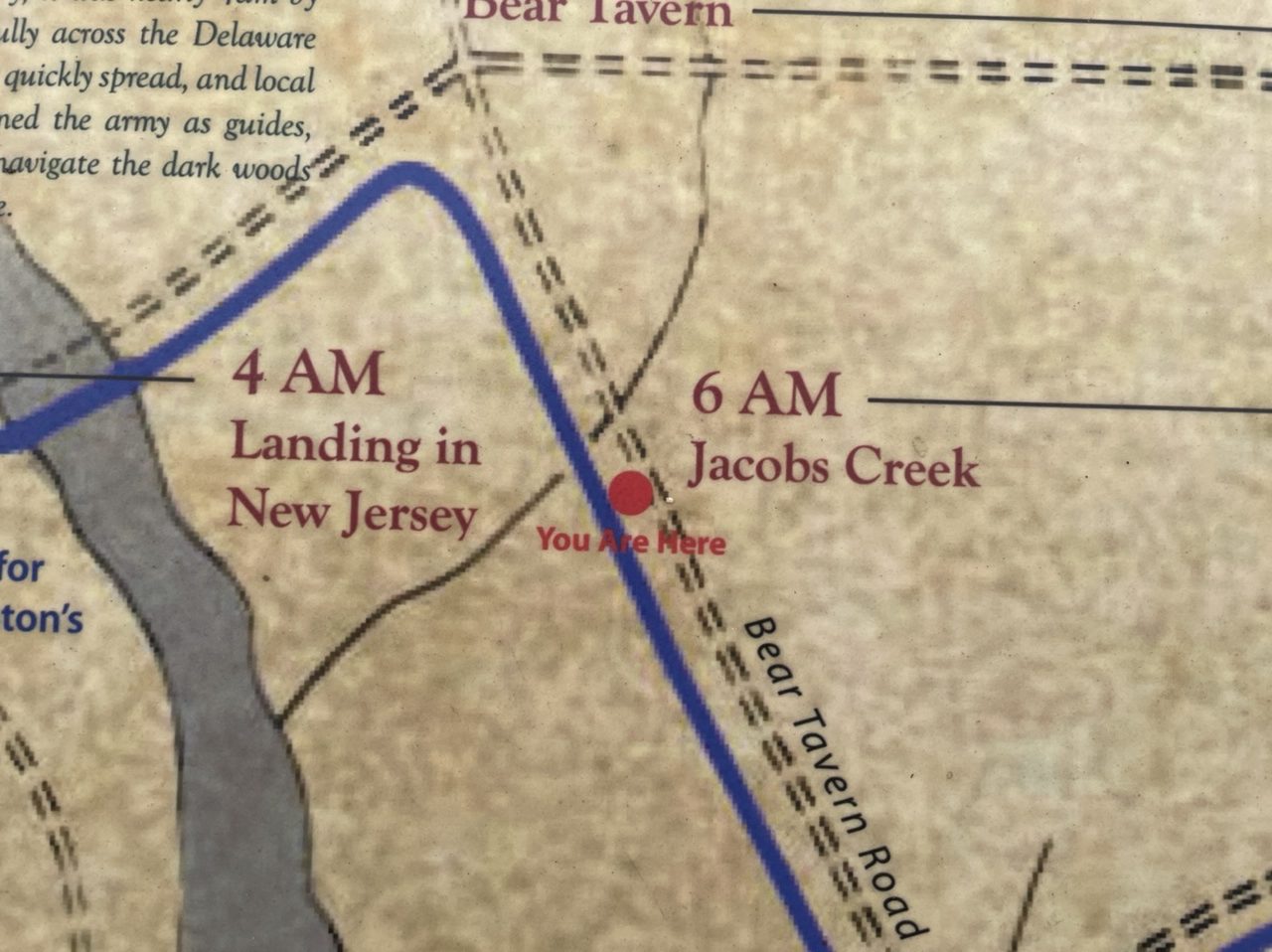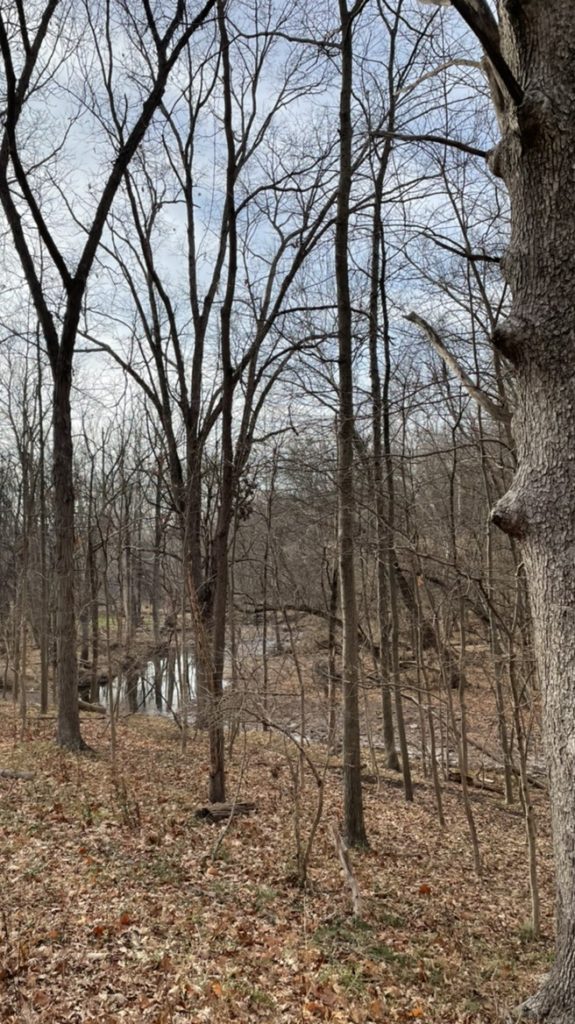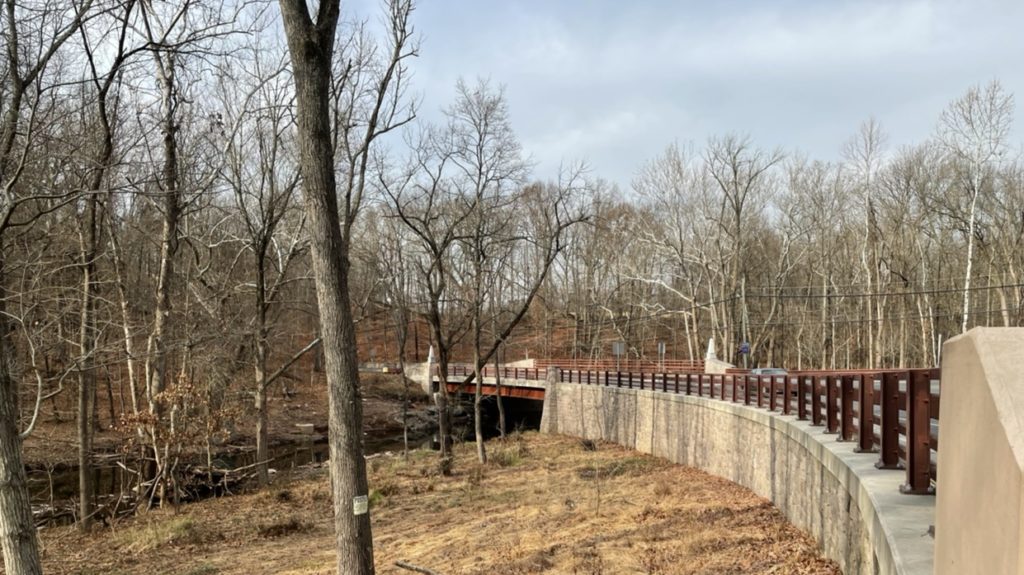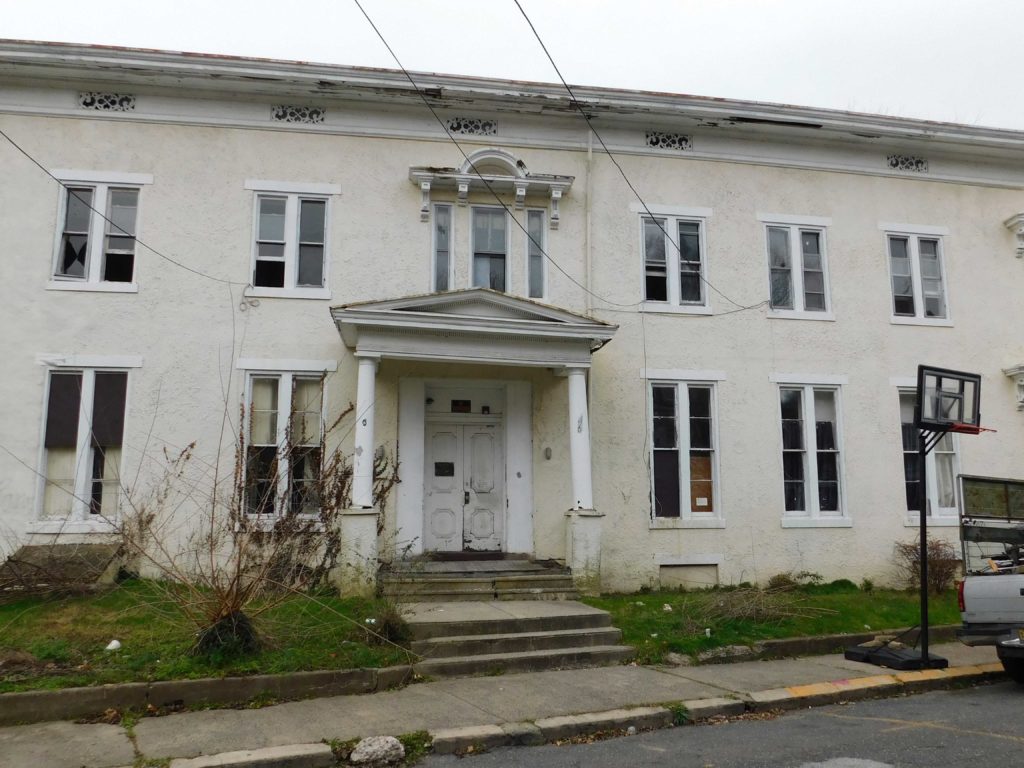Following the crossing of the Delaware River by boat late on Christmas night, 1776, the Continental Army still had to march several miles through snow, sleet, hail and rain to attack Hessian troops at Trenton. Around 6:00 AM on December 26, they reached Jacob’s Creek. This stream they had to ford on foot, winching their cannons down one side of the steep ravine and back up the other side. Once they had crossed the stream, they still had two more hours of marching before reaching Trenton, where they would achieve a stunning victory over the Hessians.
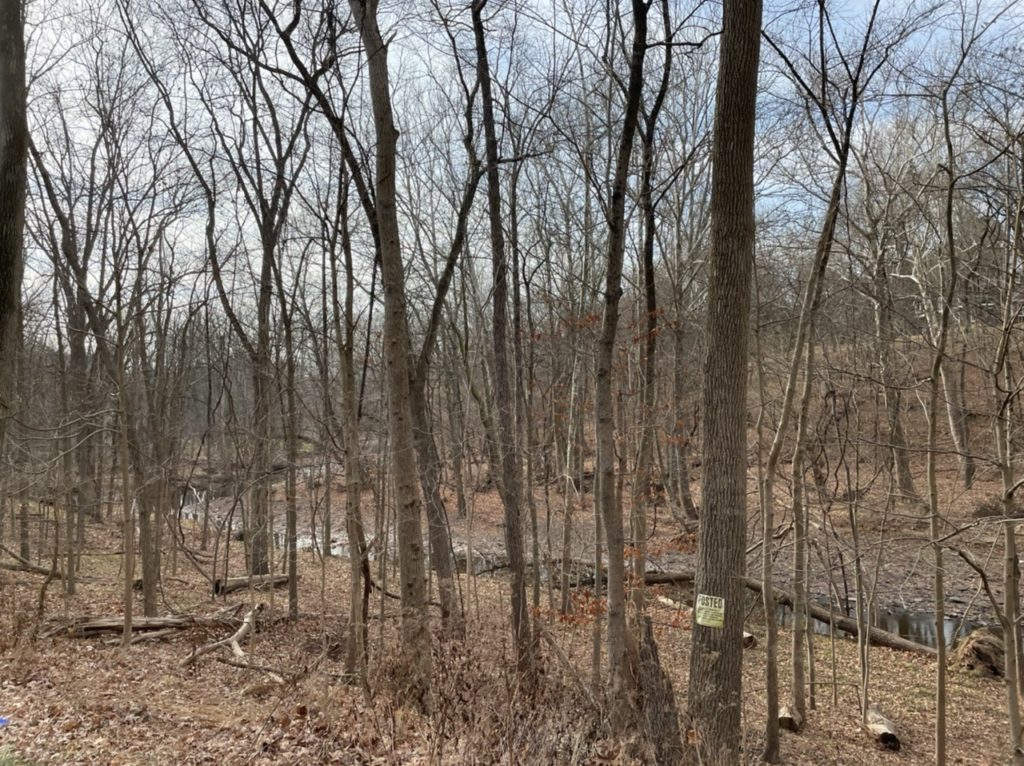
In a footnote, historian David Hackett Fischer writes “The line of the road across Jacob’s Creek and its tributary stream must be walked to be understood. Even today after many improvements it presents exceptionally steep grades and sloping surfaces. The topography of the march has been missed in every major historical account of this event” (Fischer, Washington’s Crossing, 2004, p. 516)
Featured image: Detail of interpretive sign near the modern bridge.
